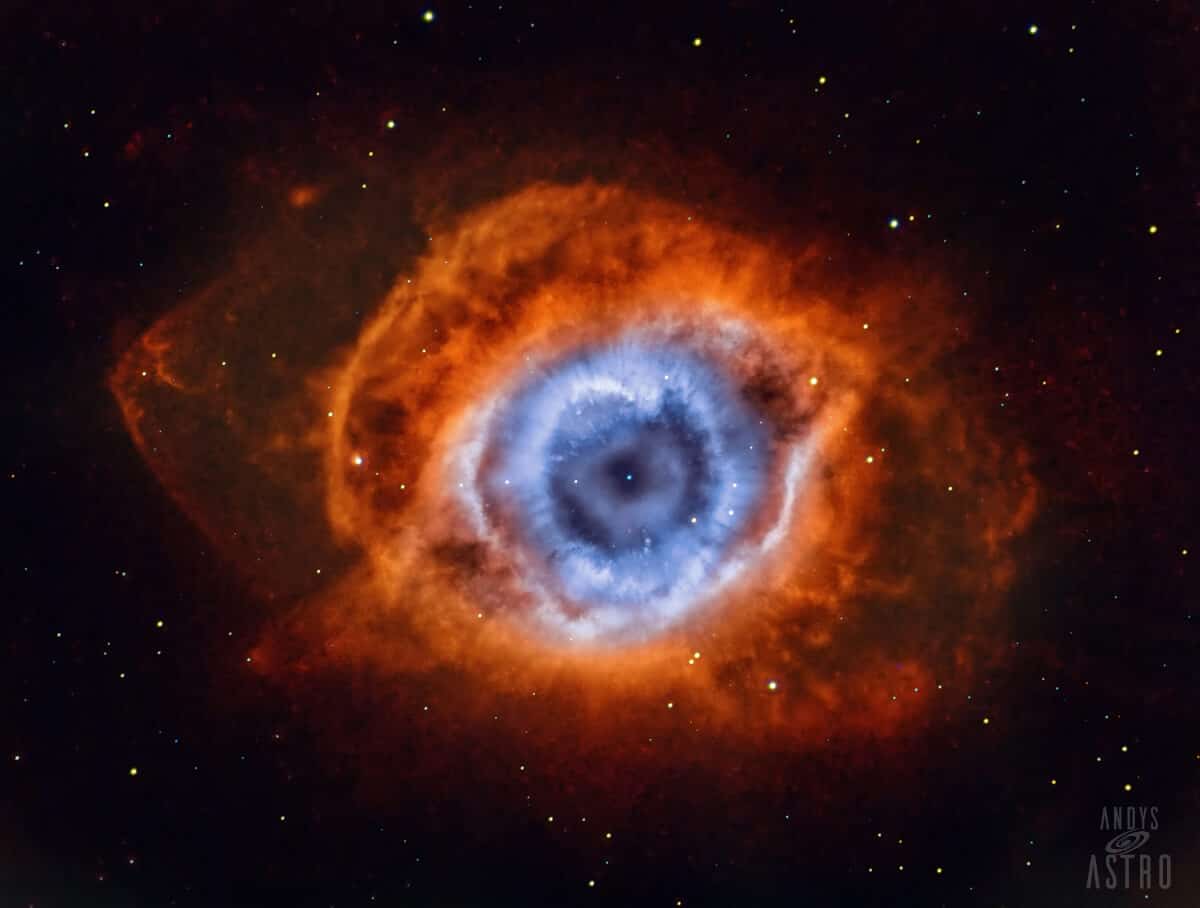In this interview, we speak to professional photographer and award-winning astrophotographer Andrew (Andy) Campbell, who resides in Melbourne, Australia.
Check out his story and amazing photos below.
About Andy Campbell
Andrew (Andy) Campbell boasts a 40-year career as a full-time professional photographer. He holds the esteemed titles of:
- Grand Master from the former Australian Institute of Professional Photography (AIPP)
- Fellow of the New Zealand Institute of Professional Photography (NZIPP)
- Master Photographer of the WPPI
Andy’s expertise lies in capturing headshots for CEOs, executives, politicians, and lawyers, though his portfolio had also included commissions in advertising, fashion, lifestyle, people, products, theatre, and architecture.
Andy, a devoted Star Trek and sci-fi enthusiast, embarked on his journey into astrophotography back in 2012 when a friend gifted him an ancient Newtonian telescope.
Intrigued by the idea of capturing celestial wonders, he joined the Astrophotography section of the Astronomical Society of Victoria for guidance.
Starting with modest equipment—an entry-level Saxon 900mm refractor, an EQ5 mount, and an SBIG one-shot color camera—he delved into the art and science of astrophotography.
Within a year, Andy upgraded to more advanced gear:
- a QSI 683 mono camera
- Astrodon filters
- an EQ6 mount
- a William Optics FLT110 refractor telescope
His dedication bore fruit in 2015 when he clinched the Deep Sky Section of the esteemed CWAS David Malin Awards, an accolade judged by the renowned astrophotographer David Malin himself.
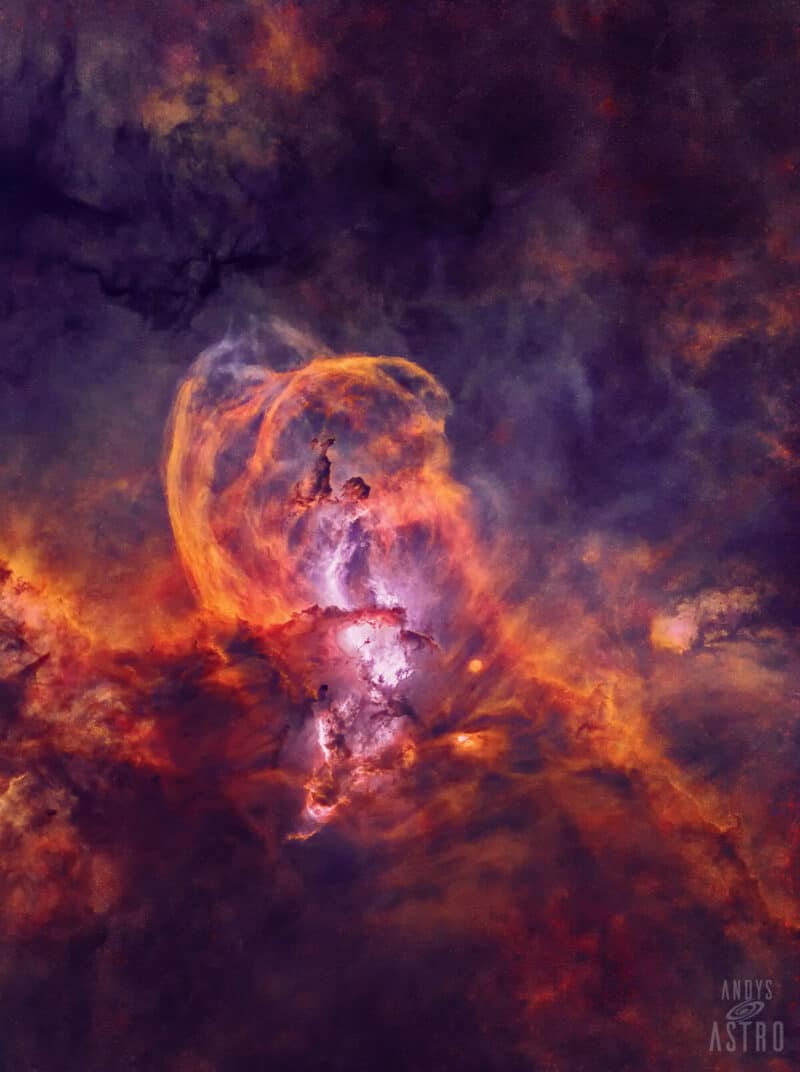
Success continued with accolades including:
- Six APODs
- Many Australian Institute of Professional Photography Gold Awards
- Recognition in QSI’s astrophotography competition, where he earned a top-of-the-line QSI 6162 CCD camera
His prowess earned him recognition in prestigious competitions like the Greenwich Observatory International Astrophotographer of the Year, where he was shortlisted in 2019, 2020, and 2023, and the Save A Star Astro2021 Competition, where he emerged as the Grand Prize Winner.
In 2022, Andy triumphed in the Nature category of The Australian Photographic Prize with his captivating “Fighting Dragons of Ara” narrowband image (see below).
Beyond capturing stellar beauty, Andy’s discerning eye led him to judge at state and national levels for the Australian Institute of Professional Photography for 25 years.
His expertise also extended to Astrobin, where he has served as a Judge since 2018.
In 2023, he chaired the inaugural Astrophotography category judging for the Australian Photographic Prize.
Andy’s journey through the cosmos, fueled by passion and persistence, continues to inspire and elevate the art of astrophotography.
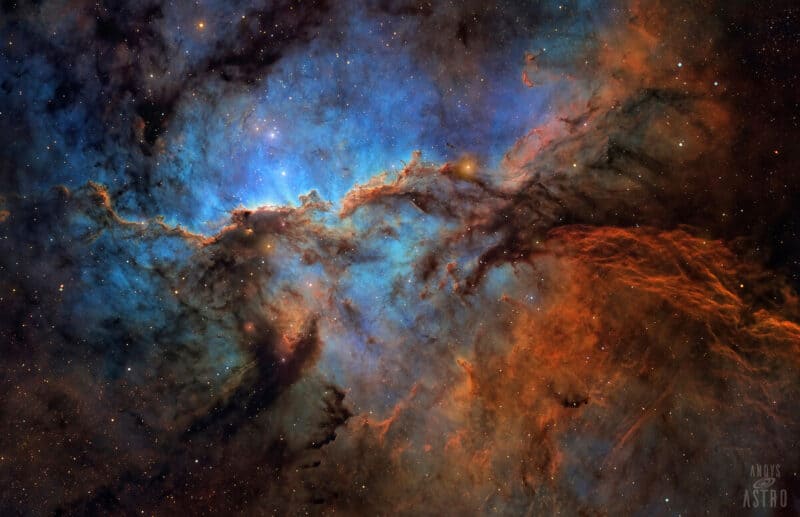
“With a background in professional photography, I prioritise creative and well-balanced framing. I believe that astro images should adhere to the principles of composition for maximum impact.”
Where do you capture your images?
Living in suburban Melbourne, I’m fortunate to reside atop a hill, offering breathtaking east and south horizon views.
This vantage point has been instrumental in the success of my narrowband imaging and equipment testing endeavours right from my backyard.
Many of my award-winning images have been captured from this very spot.
For years, I adhered to manual imaging techniques using my Mac laptop.
This involved aligning on stars through a finderscope, carefully centering them on the camera, and performing meridian flips in the early hours, all while trying not to disturb my sleeping wife!
My friend Paul, who initially gifted me the old Newtonian scope, owns a rural property in Kilmore, about 90 minutes’ drive north of Melbourne.
With its Bortle 3 skies, it’s a haven for LRGB astrophotography sessions, accompanied by whiskey and a cozy fire in winter.
Our plan is to establish a permanent observatory on the property, complete with a roll-off roof, allowing remote operation from anywhere.
Additionally, Paul and I share a passion for attending star parties, with Snake Valley near Ballarat and VicSouth near Nhill being our favorites.
Despite the four-hour drive to VicSouth, its Bortle one skies make it a stellar destination worth the journey.
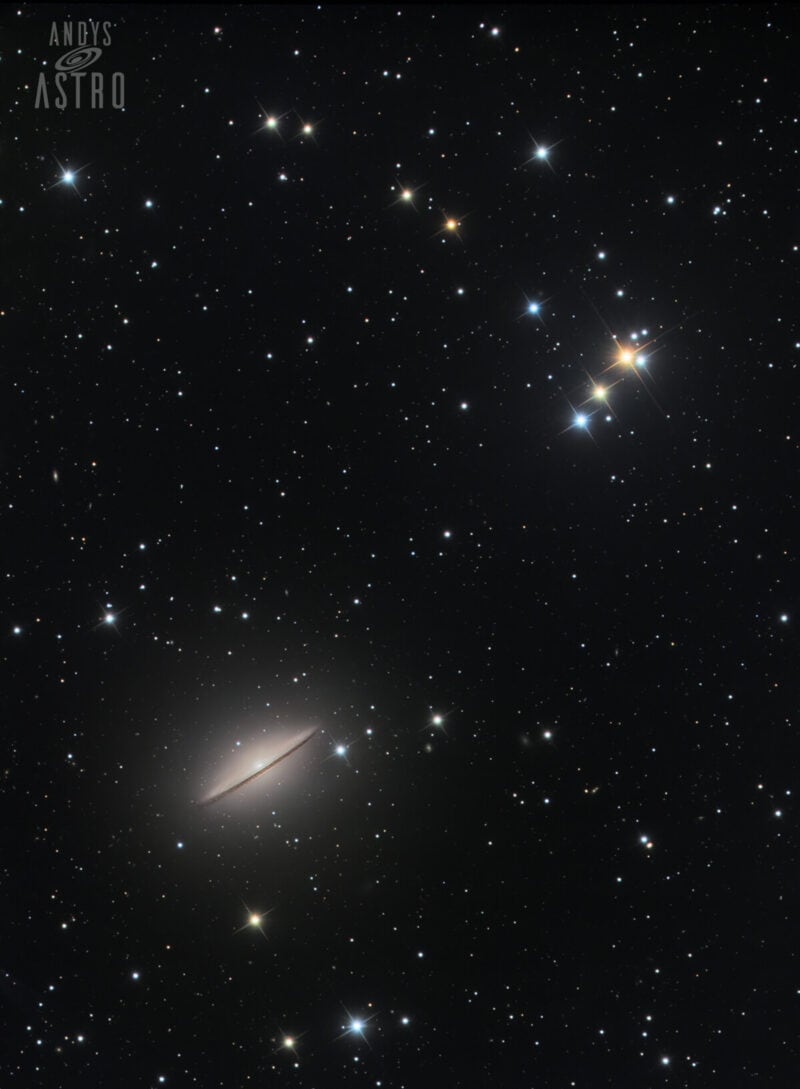
“For image planning, Voyager’s framing wizard is my go-to tool. It precisely overlays my field of view (FOV) over various sky surveys and offers an intuitive mosaic builder.”
How do you capture your images?
I now utilize Starkeeper Voyager for automated image capture, despite the initial challenge of adapting to its PC-based interface as a Mac user.
After experimenting with Stellarmate and SGP, Voyager emerged as the most reliable option—it simply works!
Previously, I relied on manual methods with Nebulosity and Sky Safari. However, witnessing Voyager’s seamless operation convinced me to make the switch.
Voyager seamlessly integrates with PHD2, Stellarium, Carte du Ciel, and all my imaging hardware.
For image planning, Voyager’s framing wizard is my go-to tool. It precisely overlays my field of view (FOV) over various sky surveys and offers an intuitive mosaic builder.
With a background in professional photography, I prioritise creative and well-balanced framing. I believe that astro images should adhere to the principles of composition for maximum impact.
It’s disheartening to see images where the subject is carelessly centered without regard for composition or aesthetics.
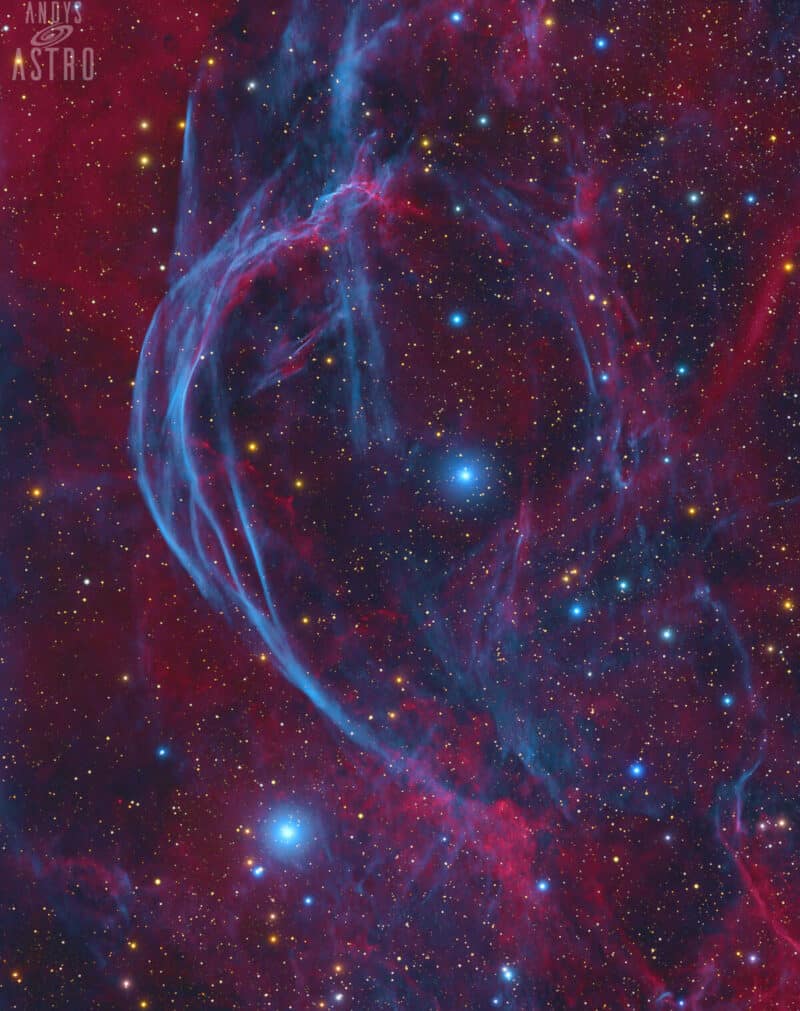
What equipment do you use?
My core setup constists of:
- Takahashi TOA-130F telescope
- Atik APX60 Mono imaging camera with a EFW3 filter wheel
- Atik Infinity guider
- iOptron CEM70G mount
- Chroma filters: Blue, Green, Red, H-alpha 5nm, OIII 3nm and S2 5nm (all 50mm)
Accessories:
- Pegasus Astro Ultimate Powerbox 2
- Moonlite Nightcrawler Focuser/Rotator
- Takahashi TOA-35 Reducer for 130
- Intel i5 Nuc
- Dew Heaters
Software:
- Starkeeper Voyager
- Aries Productions Astro Pixel Processor (APP)
- PHD2
- Adobe Photoshop
- ProDigital Software StarSpikes Pro
- Russell Croman Astrophotography NoiseXTerminator
- Russell Croman Astrophotography StarXTerminator
The Atik APX60 camera
I recently made the leap from the QSI 6162 CCD camera to the powerful Atik APX60 CMOS camera, and the initial test images have been nothing short of spectacular!
The APX60 offers higher quantum efficiency, improved cooling, greater reliability, and an expanded field of view compared to the CCD.
With my Takahashi TOA-35 0.7x reducer, I now enjoy a vast 2×3 degree FOV.
In terms of equipment upgrades, I believe I’ve reached a point of satisfaction. While never say never, my current OTA, camera, filters, focuser, and mount configuration should serve me well for the foreseeable future.
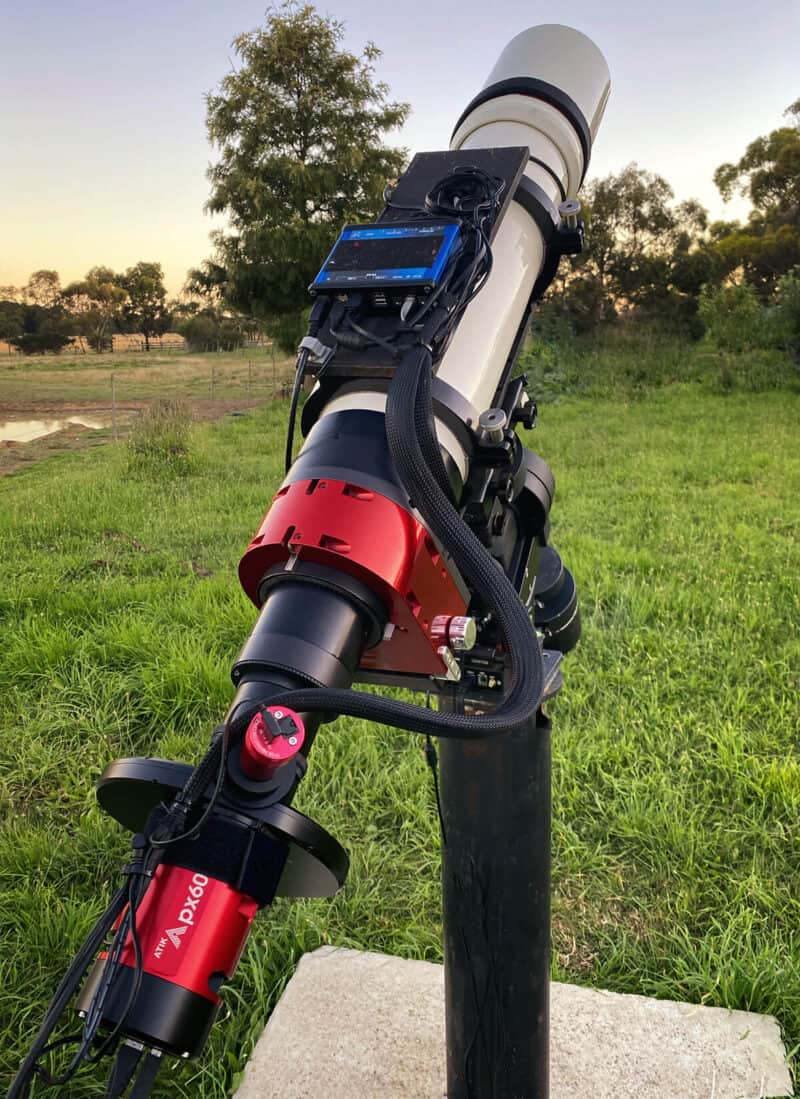
“My colour palettes are often inspired by a love of classic painters such as Van Gogh, utilising warm highlights and cool shadows.”
What post-processing do you do?
My post-production workflow begins with Astro Pixel Processor to create calibrated masters, followed by techniques borrowed from my professional photography background.
I leverage various Photoshop plug-ins and filters, often overlooked by the astrophotography community, to enhance my astro images.
To extract maximum detail, I employ multiple adjustment layers and masks to optimize dynamic range while preserving highlights and shadows.
My colour palettes are often inspired by a love of classic painters such as Van Gogh, utilising warm highlights and cool shadows.
Recently, I’ve transitioned to Russel Croman’s suite of AI-based ‘Xterminators’, which effectively sharpen and de-noise images without introducing artifacts or false details.
Described as “high-impact imagery with meticulous framing,” my style likely reflects my years of experience in terrestrial photography.
All the details of my post-processing can be found in my comprehensive 40+ page ebook – Photoshop Secrets for Astrophotographers.
I’m offering a special 25% discount for Skies & Scopes readers – just type in SKIESNSCOPES at checkout!
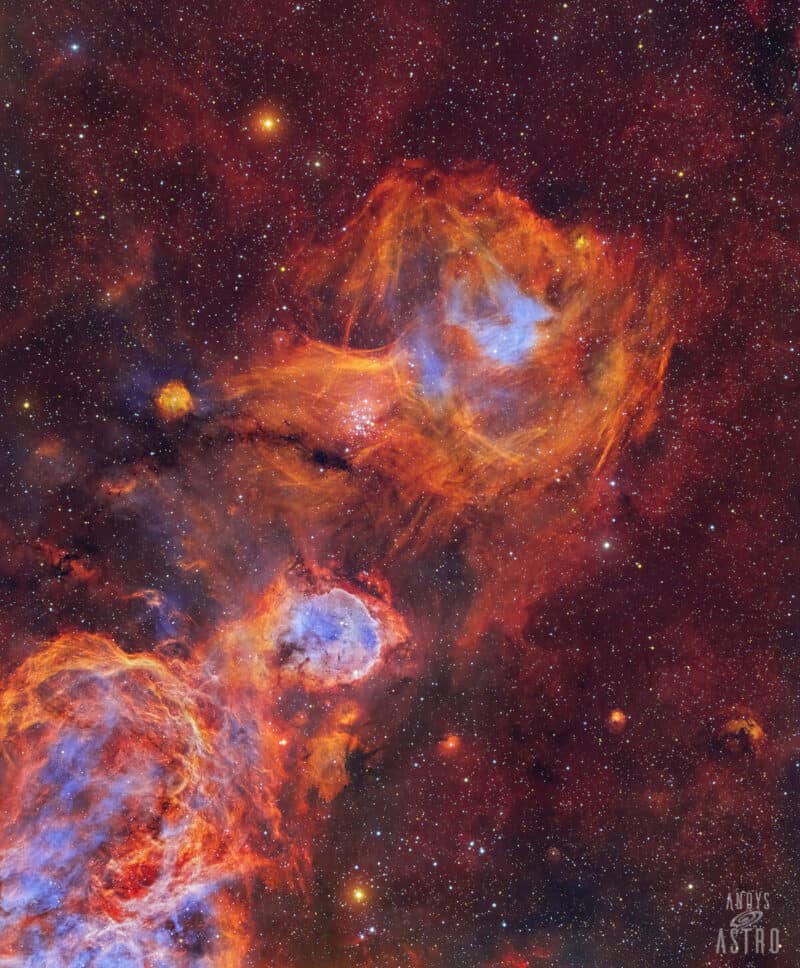
“A highlight was mentoring a novice with no prior photography or astrophotography background. From initial setup to automated imaging, he now boasts a remote observatory in rural Victoria and has earned an astrophotography award!”
Your tuition was recommended – do you still offer it?
Amidst the numerous lockdowns in 2020, enduring six in Melbourne alone, I felt compelled to share my wealth of experience and knowledge with budding astrophotographers.
Through Zoom, I mentored individuals worldwide, spanning the UK, UAE, USA, Canada, Brazil, India, and Australia.
Tailoring sessions to each participant’s experience and equipment, some were well underway, while others were just embarking on their journey. Remarkably, one client had never even unpacked his telescope!
A highlight was mentoring a novice with no prior photography or astrophotography background. From initial setup to automated imaging, he now boasts a remote observatory in rural Victoria and has earned an astrophotography award!
However, retrofitting my expertise to various levels and scouring online manuals for diverse equipment proved excessively time-consuming.
Consequently, I pivoted away from general mentorship, focusing solely on sharing Photoshop skills instead.
My current program comprises five Zoom lessons, focusing on Photoshop techniques.
From calibrated master files to crafting LRGB, HaRGB, Narrowband, and HaO3S2 images with RGB stars, participants gain insights into composition and the “secrets” behind award- winning astro images.
See here for more details on my 1-2-1 tuition offering.
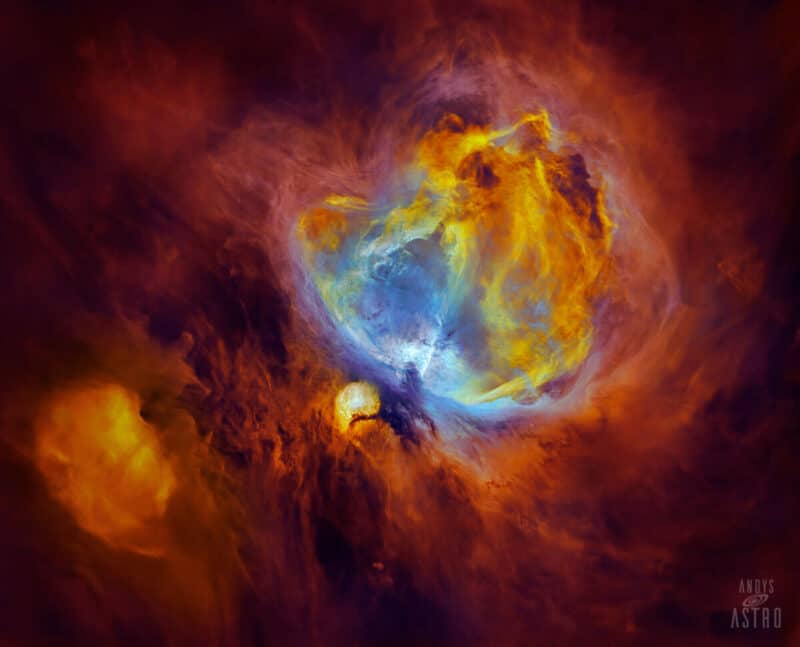
What do you recommend for budding astrophotographers?
Step One: Join your local Astronomy club, especially if it has an Astrophotography group.
You’ll fast-track your learning by tapping into members’ experiences, observing their gear in action, and benefiting from their successes and challenges.
Plus, you’ll join a community of like-minded individuals.
Step Two: Attend Star parties whenever feasible
Particularly if there are knowledgeable speakers sharing insights during daylight hours.
Even if clouds obscure the night sky, sharing conversations over a beverage can yield valuable lessons and forge lasting friendships.
Step Three: Engage with online communities
For example:
Pose questions, peruse articles, and submit your images for feedback.
You’ll discover that many have encountered similar hurdles along their journey, offering valuable tips and tricks.
Step Four: Explore the wealth of resources on YouTube
Dedicated astrophotography channels abound. From Trevor Jones, Dylan O’Donnell and Craig Stocks to The Astro Imaging Channel, you’ll find a plethora of tutorials and insights.
You might even find my own channel helpful: Andy’s Astro
What is the Australian Photographic Prize?
The Australian Photography Prize (APP) was initiated by Robyn Campbell, (my wife!) National Chair of Jurors of the former Australian Institute of Professional Photography, to maintain the sense of community and learning from the former association’s National Print Awards event.
Since 2022, Robyn and her team have successfully organized the competition, welcoming photographers worldwide.
Combining online and live judging, the event is broadcast globally on YouTube, featuring categories for Nature, Portrait, Landscape, Commercial, Wedding, and Illustrative photography, both in print and digital formats.
In a groundbreaking move, the APP introduced Astrophotography categories for Deep Space and Astro Landscapes, with myself serving as Competition Director and Panel Chair.
Unlike other competitions, the APP offers entrants written feedback on their submissions, providing valuable insights regardless of winning status.
In 2022, the competition received 433 entries from 14 countries across 5 continents, culminating in a live rejudging session of the top 25 images in each category broadcast on YouTube—a first for Astrophotography competitions worldwide.
This year, the APP Astrophotography category will evolve into “The Astrophotography Prize,” hosting a standalone online event in September with live judging and presentations from esteemed international judges.
Entries for “The Astrophotography Prize” will open in August.
Where people can learn more about you?
My interests extend beyond astrophotography to include my family, Sci-Fi, Martinis, smoked BBQ, Korean BBQ, AFL football, and cricket!
For my astro images, videos, and resources, visit https://andysastro.com/.
You can also find me on:


